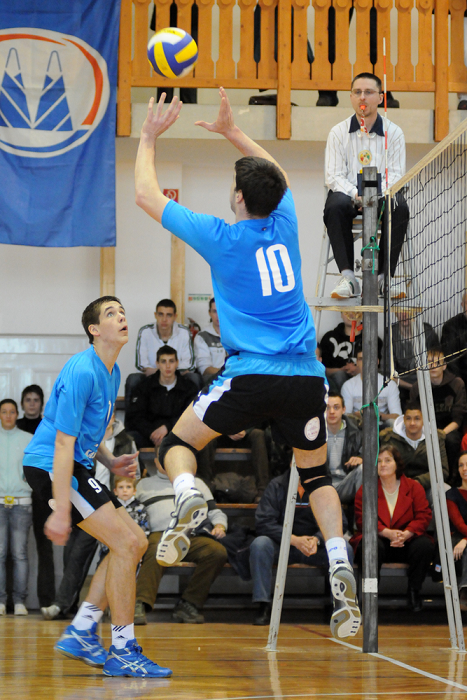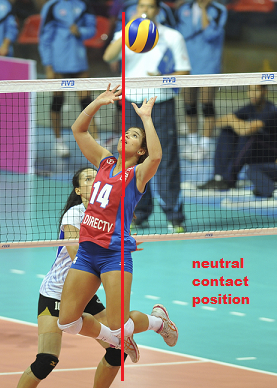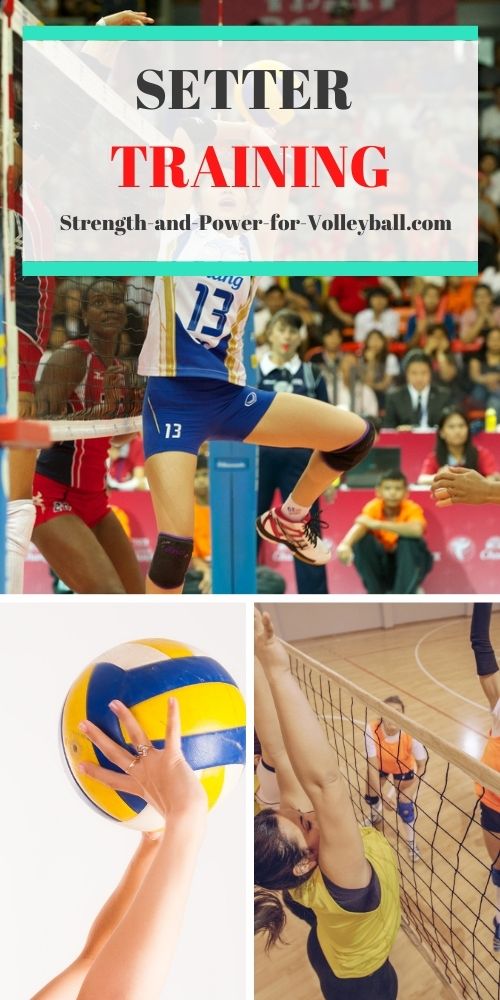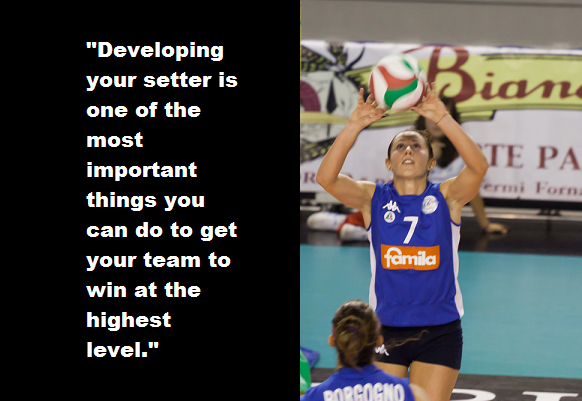Volleyball Setter Training
Important Skills that Must be Trained
Setter training is important. An extremely athletic setter can get away with not focusing a lot on technique.
However, most setters will need instruction. And if you want to be successful setting at a high level, you will need a lot of training.
The goal with setter training is for your setter to advance to a “higher level” as quickly as possible. The more effective and efficient the training, the faster the setter will progress.
From observing high level volleyball, you will notice the best setters have things in common when it comes to the technique and footwork.

The following are some key characteristics of high level setters...
- Consistent high contact position. For the delivery of most sets, a great setter will contact the ball high above the head, close to a neutral position. A high contact position helps the setter set the ball higher. This position is also important for making deceptive moves such as setting a ball back or attacking on two.
- The finish hand position closely mimics the start position. A really good setter makes setting look easy. This has a lot to do with the consistent hand position. It seems just about every coach believes the hand position at pre-contact is important. Pre-contact is important, but what is also very important is the position of the hands at post-contact (right after delivering the set).
- For cleaner sets, focus on the hand positions. The position of the hands at post-contact should look very similar to the pre-contact hand position. Get these positions nailed down and you will likely solve a lot of ball handling issues.
- Consistent hand setting technique. In the beginning, always focus on consistent technique. If you want to improve setting consistency and accuracy, focus on both a consistent start and a consistent finish hand position.

- Consistent footwork. The best setters train specific footwork patterns. The goal is for the setter to become more comfortable moving quickly to different areas of the court.
- Challenge the feet. You want to challenge the setter so that when it comes time to play in a real game, the setter will be more comfortable moving quickly to set the ball. Challenging the feet will help the setter become more athletic and comfortable for getting in position and executing difficult plays for these tough situations.
- Setting while moving. There will always be a time when the setter can’t get in a position stopped, ready to set. So it's important for the setter to develop skills for setting while on the move.
If you enjoyed these tips and would like to keep it close to you at any time, just save this pin to your Pinterest Volleyball Training Board.
- Finishing on one foot. Setting Movements involve finishing on either the left or right foot and also jumping off both feet (the jump set). Sometimes you will only need to take one or two steps to the ball, while a lot of times you will need to take many steps. The key is how you finish your movement (right foot finish, left foot finish, etc).
- Challenging overall athleticism. The setting position is a very athletic position. The best setters are often very athletic and can actually become more comfortable setting while on the move. This is much different than waiting for the ball in a stagnant ready position. There will always be a time when a setter must chase down difficult passes. This is where practicing challenging athletic movements becomes so important in setter training.
Setter Training is Important
The setter position is a very important position in volleyball. The setter has many roles and must be well prepared. Don’t make the mistake of just hoping the setter figures it all out.
If it can possibly happen then the setter needs to prepare for it.
Continually change the difficulty factor by placing the setter in more difficult situations. The setter is involved in nearly every rally and needs to be comfortable handling any of the many possible problems that may arise.
Get My Setting Secrets!
Volleyball › Coaching Volleyball › Setter Training


